UNE LUMIÈRE DANS MON LIVRE – A LIGHT IN MY BOOK – UNA LUCE NEL MIO LIBRO – GALERIE VÉRA AMSELLEM – CURATED BY VITTORIA BIASI – PARIS

A light in my book
by Vittoria Biasi
Gallery Vera Amsellem
www.galerieveraamsellem.com
48 Rue du Roi de Sicile – 75004 Paris
Book of Artist International Exhibition
13 december 2012 – 15 January 2013
Opening 13 December 2012 at 6:30 pm
Artists:
Sidival Fila, Silvia Stucky, Lea Contestabile, Adolfina De Stefani, Isabelle Fordin, Valentina Colella, Luigi Di Sarro, Alessandra Porfidia, Fiorella Rizzo, Federica Luzzi, Licia Galizia, Jacopo Benci, Emanuela Lena, Daniela Monaci, Vincenzo Ceccato, Sylvio Giardina and Stato di Famiglia, Luisa Mazza, Paola Romoli Venturi, Kakuko Ishii, Kim Jung Ju, Naoya Takahara, Jose Cuneo, Xavier Devaud, Ariane Fruit, Hélène Loussier, Yves Langlois, Philippe Massis, Martine Salavize, Nelly Saulnier, Ji Sung, Michèle Tassi, Zacharie Ellie
Text by Vittoria Biasi – All Rights Reserved. Copyright 1F mediaproject
Early in 1900 the artist book bolsters a pathway, an identity of art-object that gives origin to collections considered the most important in the world: Bertini’s Fund at Florence National Library and the Collection for the Books of Artist at Paris National Library.
A possible history of the artist book linked to both the themes of white and light can be recognized in the spaces blank that Stephane Mallarmé introduced into his writing and that in Claudel’s poetry becomes rhythm and for Marinetti is liberty. Malevic entrusts the Suprematist ideology to a handmade catalogue realized in twenty reproductions of the work. It will be Fortunato Depero to confer to the book the dignity of a work of art.
The book of artist is an occasion to seek the essence of a language, of a poetics, hidden inside its pages. A light in my book titles such an exhibition, where the word light hints at a revelation, at a bright meeting with the own self and to the feast of light that occurs every 13 December, in remembrance of a book dedicated to the Ville Lumiere by Robert Delauney during 1926.
Vera Amsellem Gallery proposes the exhibition Una Luce nel mio libro, planned and edited by Vittoria Biasi, on two different levels in its new show rooms situated in 48 Rue du Roi de Sicile at Paris.
At editor’s request, the international artists, Sidival Fila, Silvia Stucky, Lea Contestabile, Adolfina De Stefani, Isabelle Fordin, Valentina Colella, Luigi Di Sarro, Alessandra Porfidia, Fiorella Rizzo, Federica Luzzi, Licia Galizia, Jacopo Benci, Emanuela Lena, Daniela Monaci, Vincenzo Ceccato, Sylvio Giardina and Stato di Famiglia, Luisa Mazza, Paola Romoli Venturi, Kakuko Ishii, Kim Jung Ju, Naoya Takahara, Jose Cuneo, Xavier Devaud, Ariane Fruit, Hélène Loussier, Yves Langlois, Philippe Massis, Martine Salavize, Nelly Saulnier, Ji Sung, Michèle Tassi, Zacharie Ellie trace out endless pathways and symbols on the light concept, meant to be the heart of the thought and of the art of poetry.
Sylvio Giardina and Stato di Famiglia propose a book/album full of reproductions duplicated with slight variations, creating a flowing image that due to optical effects, becomes a virtual sculpture that comes out the pages and reproduces itself for the action of a mirrored case. Sylvio Giardina and Stato di Famiglia transcribe the history and poetics of a study made by them on the performance that takes in the search on the fingers movement in the weaving from Vermeer studies on, just like in Gulliver’s travel to Lilliput. The light is the history of any mankind! Its formula can be written on paper in perpetual memory or admire it transfixed as in a play where magic and innocence are the conquests of a pathway, to make emotional meetings beyond any personal or territorial details. Vincenzo Ceccato, Valentina Colella, Jacopo Benci tell of such a scientific/fabulous idea of light, which is the only correspondence, the fact you can interact with on different levels. Vincenzo Ceccato’s theoretical elaborations set the light as a formula. Jacopo Benci traces a historic pathway of pictorial, philosophic, artistic quotes in order to reach the concept of evanescence, extreme language both real and creative. Valentina Colella enters into the behavioural structure of light, transferring luminist casualness into the creative rule. Following a semiotic route and without raising ones own eyes Fiorella Rizzo draws the marks of the bulb linking them to the absence, to the inner pursuit of a light. A hard, inward and deep route unites Fiorella Rizzo to Daniela Monaci along the semiotic pathway that we can define as narratological following Paolo Fabbri. The enunciation of light as stated by the exhibition title circumscribes the tactile surface but expands the virtual and poetical one. Paola Romoli Venturi separates the light through tarlatan pages where even the concept of the whorls of a shell, hinting to the eyes of Santa Lucia (St. Lucy), is enriched with iridescent chromatism. In Luisa Mazza the spherical transparency makes it think to impregnability, to monad, to the desire that condemn the mankind, it can be translated into the sentence “il manque”. Light is a cultural and optical acquisition settled within ourselves but uncatchable at all times. Like the white! Alessandra Porfidia translates the white monochromy into line which is her experienced matter of fact with different materials and statures. In the book of artist the history of her line solicits chromatic calibres, being after the truth beyond the truth to face the never-ending challenge of the hero/man. The Grey Friar Sudival Fila and Federica Luzzi, Emanuela Lena collect the tears of space and write down a document on the world! following their own mind sketch. By the pages of their book enter into a difficult conversation with the depth of thing, of soul, of intrinsic nature, in suggestive reply to the art that runs after the deep thread of darkness, the light. All the works as all the existences contain the connection between space and time. Adolfina De Stefani proposes the book of artist riddled with roses which multiply and interact with the wishing action “of plucking the petals off”. The languages of art speak about the own self, between truth and falsehood, between suggestions of present and strains of all our yesterdays, among which the books of the artist like Silvia Stucky, Isabelle Fordin, Lea Contestabile, Kim Jung Ju are linguistic projections. The tale of man sets different balances with ones own history. Lea Contestabile privileges a fetishist connection enriched by white/light significance. Isabelle Fordin inscribes freedom of mankind between transparency and white, recovering an Etrurian symbology. Silvia Stucky constructs a thin layer of script with painted or paper textures from which the light overruns like a natural or a white element, reminding us Arab and Eastern facades. Kim Jung Ju realizes a project in “consequence” making images and archetypes flow from a natural fibre almost fossilized. The exhibition Una luce nel mio libro has an unexpected plot with the works of Licia Galizia, of Kakuko Ishii. Their books are works in motion, that reproduce natural sound both hidden or clear when listened to. The pages are like organ-pipes, they are strips covered by touch. In such a sense the work of Naoya Takahara rejoins the particular argument of emptiness and fullness, suggesting the mathematical precision cut out from pages of hand made paper. The concept of Yin and Yang is essence of the matter, plastic worth. The sculptural dimension of the book of artist is made absolute in the works of Ji Sung and Michéle Tassi that shade their symbols within impenetrable pages! The book is a conceptual work par excellence: Luigi Di Sarro with his works in the Centre Pompidou’s collection, pinpoints the mark as a double component both of obstruction and revelation that puts into effect in the mysterious work and at the mirror, reflecting a determinism truly unknown to us. Yves Langlois’s book travels the artist’s intimacy that wants contain the full experience within the marks of a casket, tackling the ability to see beyond, to trace out a border line among things after having snapped objets d’art and the world. Martine Salavize links pictorial research to the social view of the poet Antoine Emaz.
For the photographer Zacharie Ellie the book of artist enters into relation with the reality as it seems before any mise en scene to reach the essence of photography. Ariane Fruit recomposes the transfigured reality of images that are enriched and embellished by gestures and particulars which tell beyond the true life. For some artists, like Hélène Loussier and Jose Cuneo, the book is an occasion to structure a language, a thought, a thought of political transformation that solicits possible worlds. The books of artist of Philippe Massis and Xavier Devaud are involved in a pictorial project both of love and freedom whose core is the expressive and swift stroke. The light enters into the book of artist as a pictorial research, colour and thought sublimation, selection of materials that begin a luminist challenge, that can be represented by the feather, symbology of annunciation that on the wings might comes out the feathers book of Nelly Saulnier. In the history of art, the symbology of light is an endless pathway, of wonder and love, of perception and substantial assumption as it is realized and proposed in A light in my book exhibition.
Vittoria Biasi
Traslated by Salvatore Rollo
.-.-.-.
Una luce nel mio libro
A cura di Vittoria Biasi
Galleria Vera Amsellem
www.galerieveraamsellem.com
48 Rue du Roi de Sicile – 75004 Paris
Esposizione internazionale sul libro d’artista
Parigi 13 dicembre 2012 – 15 gennaio 2013
Opening 13 dicembre 2012 ore 18,30
Partecipazioni artistiche:
Sidival Fila, Silvia Stucky, Lea Contestabile, Adolfina De Stefani, Isabelle Fordin, Valentina Colella, Luigi Di Sarro, Alessandra Porfidia, Fiorella Rizzo, Federica Luzzi, Licia Galizia, Jacopo Benci, Emanuela Lena, Daniela Monaci, Vincenzo Ceccato, Sylvio Giardina e Stato di Famiglia, Luisa Mazza, Paola Romoli Venturi, Kakuko Ishii, Kim Jung Ju, Naoya Takahara, Jose Cuneo, Xavier Devaud, Ariane Fruit, Hélène Loussier, Yves Langlois, Philippe Massis, Martine Salavize, Nelly Saulnier, Ji Sung, Michèle Tassi
Testo di Vittoria Biasi © Tutti i diritti riservati. Copyright 1F mediaproject
Dagli inizi del Novecento il libro d’artista consolida un percorso, un’identità di oggetto d’arte, dando origine a collezioni tra cui il Fondo Bertini della Biblioteca Nazionale Centrale di Firenze e la collezione libri d’artista della Biblioteca Nazionale di Parigi, considerate tra le più importanti del mondo.
Una possibile storia del libro d’artista legata al tema del bianco e della luce si può riconoscere negli spazi bianchi che Stéphane Mallarmé introduce nella scrittura e che nella poesia di Claudel divengono ritmo e in Marinetti libertà. Malevič affida l’ideologia suprematista ad un catalogo realizzato a mano in venti copie. Sarà Fortunato Depero a rendere il libro un oggetto d’arte con la dignità dell’opera.
Il libro d’artista è un’occasione per cercare di raggiungere l’essenza del linguaggio, della poetica, celata tra le pagine. Da ciò il titolo della mostra Una luce nel mio libro, dove la parola luce allude alla rivelazione, all’incontro ‘luminoso con il sé’ e alla festa della luce che ricorre ogni 13 dicembre, in ricordo del libro che Robert Delaunay dedicò alla Ville Lumière nel 1926.
La Galleria Vera Amsellem propone, nello spazio espositivo in Rue du Roi de Sicile 48 a Parigi, la mostra Una luce del mio libro su progetto e cura di Vittoria Biasi.
Su invito del curatore, gli artisti internazionali Sidival Fila, Silvia Stucky, Lea Contestabile, Adolfina De Stefani, Isabelle Fordin, Valentina Colella, Luigi Di Sarro, Alessandra Porfidia, Fiorella Rizzo, Federica Luzzi, Licia Galizia, Jacopo Benci, Emanuela Lena, Daniela Monaci, Vincenzo Ceccato, Sylvio Giardina e Stato di Famiglia, Luisa Mazza, Paola Romoli Venturi, Kakuko Ishii, Kim Jung Ju, Naoya Takahara, Jose Cuneo, Xavier Devaud, Ariane Fruit, Hélène Loussier, Yves Langlois, Philippe Massis, Martine Salavize, Nelly Saulnier, Ji Sung, Michèle Tassi, Zacharie Ellie tracciano infiniti percorsi e simbologie attorno al concetto di luce, intesa come centralità del pensiero e della poetica artistica.
Sylvio Giardina e Stato di Famiglia propongono un libro/album ricco di riproduzioni ripetute con leggere variazioni, creando un’immagine fluida, che, per effetto ottico, diviene una scultura virtuale, uscendo dalle pagine e moltiplicandosi per effetto dell’azione specchiante della custodia. Come nel viaggio di Gulliver nel paese di Lilliput, Sylvio Giardina e Stato di Famiglia trans-scrivono tra le pagine la storia e la poetica di un loro studio sulla performance che abbraccia la ricerca del movimento delle dita nella tessitura partendo dagli studi di Vermeer. La luce è la storia di ogni umanità! Si può scrivere la sua formula in un libro per rimandarla a eterna memoria o guardarla affascinata come in un gioco, in cui incanto e ingenuità sono le conquiste di un percorso, di un incontro emozionale al di là di ogni scansione anagrafica o territoriale. Vincenzo Ceccato, Valentina Colella, Jacopo Benci raccontano questa visione scientifico/fiabesca della luce, che è la corrispondenza unica, il ‘dato’con cui interagire a differenti livelli. Lo studio teorico di Vincenzo Ceccato pone la luce come formula. Jacopo Benci traccia un percorso storico di citazioni pittoriche, filosofiche, artistiche per raggiungere il concetto di evanescenza, linguaggio estremo reale e creativo. Valentina Colella entra nella struttura comportamentale della luce, trasferendo la casualità luministica nella regola creativa. Seguendo un percorso semiotico e senza sollevare lo sguardo, Fiorella Rizzo disegna i segni della lampadina legandoli all’assenza, alla ricerca interiore della luce. Una strada difficile, interiore, intensa accomuna Fiorella Rizzo e Daniela Monaci lungo il percorso semiotico, che, ricalcando Paolo Fabbri, possiamo definire narratologico. L’enunciazione della luce, racchiusa nel titolo della mostra, circoscrive la superficie tattile e espande quella virtuale e poetica. Paola Romoli Venturi scompone la luce attraverso le pagine di tarlatana in cui anche il concetto di spirale della conchiglia, che allude agli occhi di Santa Lucia, si arricchisce di cromatismi iridescenti. La trasparenza sferica nell’opera di Luisa Mazza fa naturalmente pensare all’imprendibilità, alla monade, al desiderio che danna l’umanità, traducibile nell’espressione ‘il manque’. La luce è un’acquisizione culturale, visiva sedimentata in noi, ma per sempre imprendibile. Come il bianco! Alessandra Porfidia traduce nel monocromia bianca la linea, che è il suo dato di osservazione sperimentato tra differenti stature e materiali. Nel libro d’artista la storia della sua linea postula gli spessori cromatici, alla ricerca di una verità oltre la verità, in quella sfida perenne dell’eroe/uomo. Il monaco francescano Sidival Fila, Federica Luzzi, Emanuela Lena raccolgono le lacerazioni dello spazio e seguendo il disegno della mente scrivono un documento del mondo! Tra le pagine del loro libro intraprendono il difficile dialogo con il profondo dell’oggetto, dell’anima, della natura nel riscontro suggestivo dell’arte che insegue il filo profondo dell’oscurità, della luce. Tutte le opere, come tutte le esistenze, racchiudono il rapporto spazio temporale. Adolfina De Stefani propone il libro d’artista intessuto di rose che moltiplicano e pongono in interazione la pratica desiderante di ‘sfogliare’. I linguaggi dell’arte parlano del sé, tra il vero e il falso, tra le suggestioni del presente e le pressioni del passato, di cui i libri d’artista di Silvia Stucky, Isabelle Fordin, Lea Contestabile, Kim Jung Ju sono le proiezioni linguistiche. La favola dell’uomo stabilisce differenti equilibri con la propria storia: Lea Constestabile privilegia il rapporto feticista, arricchito dalle significazioni del bianco/luce. Isabelle Fordin inscrive la libertà dell’uomo tra la trasparenza e il bianco recuperando una simbologia etrusca. Silvia Stucky ‘costruisce’ un velo scritturale con trame dipinte o di carta da cui la luce sfora come elemento naturale o bianco, ricordando le facciate arabe e orientali. Kim Jung Ju realizza un progetto di ‘conseguenza’ facendo sgorgare immagini e segni archetipi da una fibra naturale quasi fossilizzata. La mostra Una luce nel mio libro ha un intreccio imprevedibile con le opere di Licia Galizia, di Kakuko Ishii. I loro libri sono opere in movimento, che ascoltate riproducono suoni naturali, celati o evidenti. Le pagine sono canne di organi, sono lembi percorsi dal tatto. In tal senso l’opera di Naoya Takahara riunisce il particolare enunciato del vuoto e pieno, proponendo la figura geometrica della perfezione ritagliata all’interno di pagine di carta fatta a mano. Il concetto di Yin e Yang è essenza della materia, valore plastico. La dimensione scultorea del libro d’artista si assolutizza nelle opere di Ji Sung e Michèle Tassi che proteggono le loro simbologie tra pagine inaccessibili! Il libro è l’opera concettuale per eccellenza: Luigi Di Sarro, presente con le sue opere nella collezione del Centre Pompidou, individua nel segno la duplice componente di sbarramento e rivelazione, che mette in atto nell’opera misteriosa e allo specchio, che riflette un determinismo a noi realmente sconosciuto. Il libro di Yves Langlois percorre l’intimità dell’artista che, dopo aver fotografato oggetti d’arte e il mondo, vuole racchiudere tra i segni di uno scrigno la ricca esperienza, confrontandosi sulla capacità di vedere oltre, di tracciare una linea di confine tra le cose. Martine Salavize lega la ricerca pittorica alla visione sociale del poeta Antoine Emaz. Per il fotografo Zacharie Ellie il libro d’artista entra in relazione con la realtà quale si presenta prima di ogni mise en scene per raggiungere l’essenza della fotografia. Ariane Fruit ricompone la realtà trasfigurata delle immagini che sono arricchite, abbellite da gesti e particolari che narrano oltre la vera visione. Per alcuni artisti, come Hélène Loussier e Jose Cuneo, il libro è un’occasione per strutturare un linguaggio, un pensiero, un pensiero di trasformazione politica sollecitando mondi possibili. Il libro d’artista di Philippe Massis e Xavier Devaud sono impegnati su un progetto pittorico, di amore e libertà che trova la sua essenza nel tratto veloce, espressivo. La luce entra nel libro d’artista come ricerca pittorica, sublimazione del colore, del pensiero, selezione di materiali che instaurano una sfida luministica, che può essere rappresentata dalla piuma, simbolo di annunciazione che si libera nel volo forse uscendo dal libro di piume di Nelly Saulnier. Nella storia dell’arte, la simbologia della luce è un percorso infinito, di stupore di amore, di percezione, di assunzione concreta realizzata e proposta nella mostra Un luce nel mio libro.
La Galleria Vera Amsellem ospita l’esposizione nei suoi nuovi spazi disposti su due differenti livelli, che interagiscono con il concetto proprio della mostra.
Vittoria Biasi
© Tutti i diritti riservati. Copyright 1F mediaproject
Position the cursor on the images to view captions, click on images to enlarge them.
Posizionare il cursore sulle immagini per leggere le didascalie; cliccare sulle immagini per ingrandirle.






















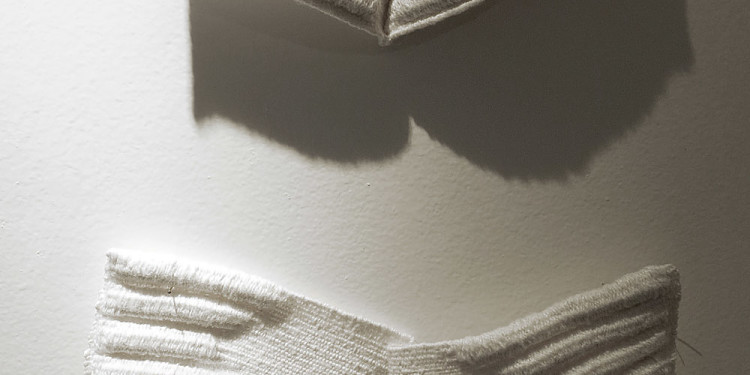

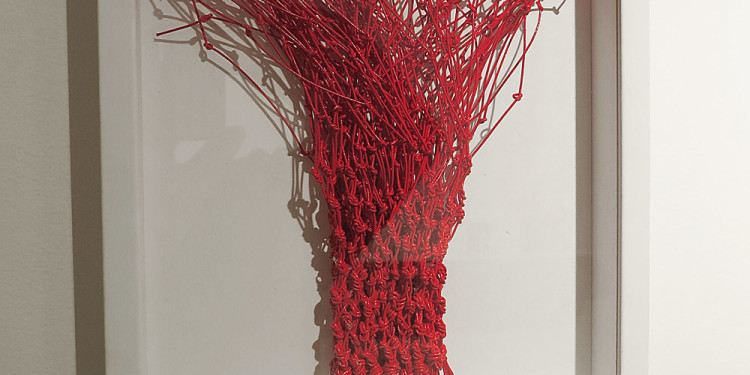



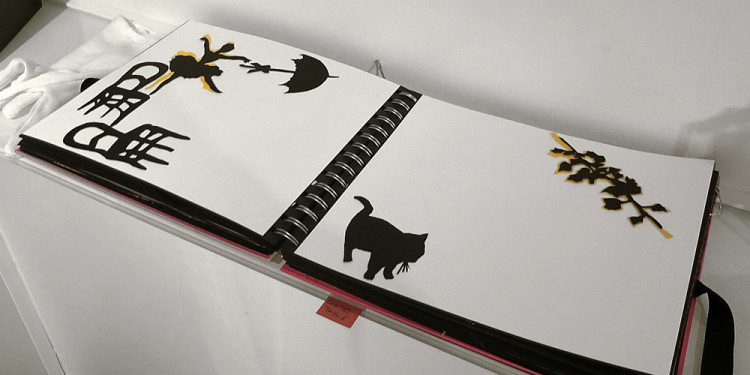

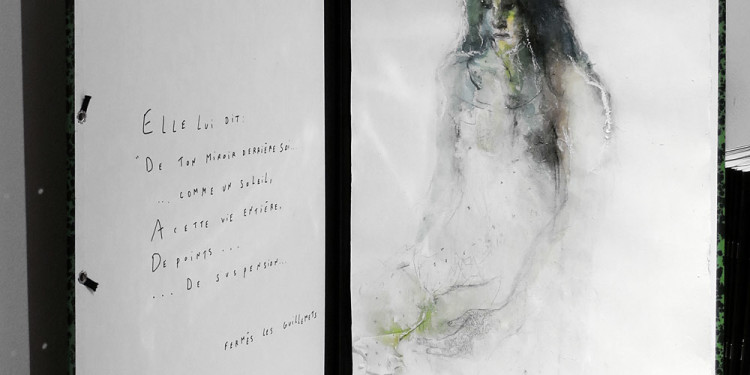







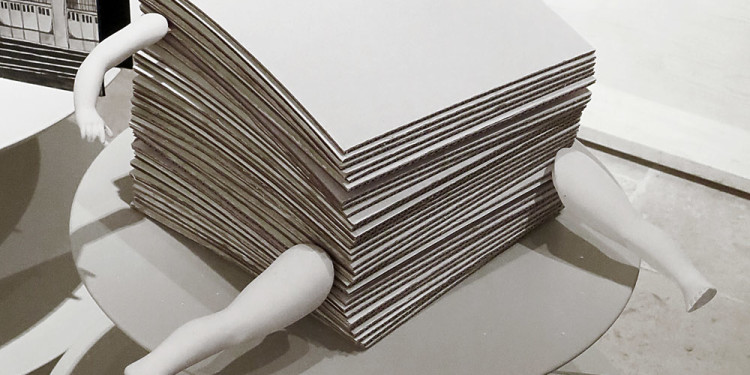


















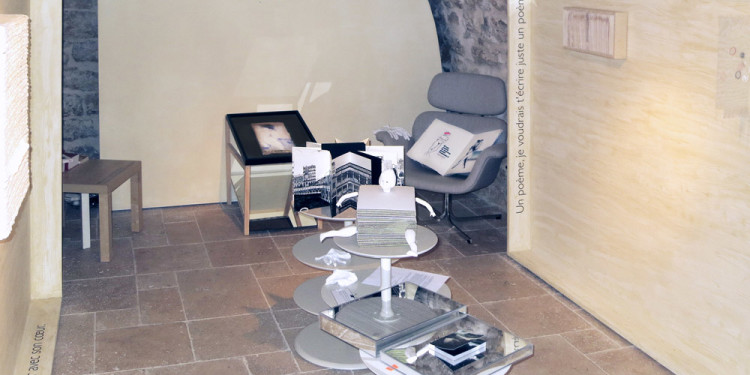




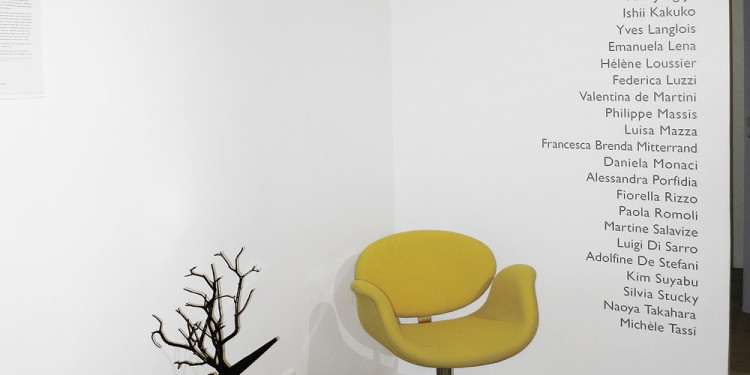








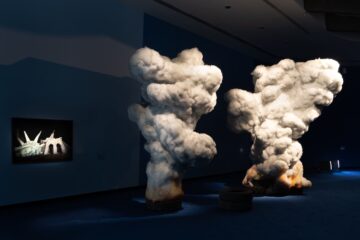




No Comment